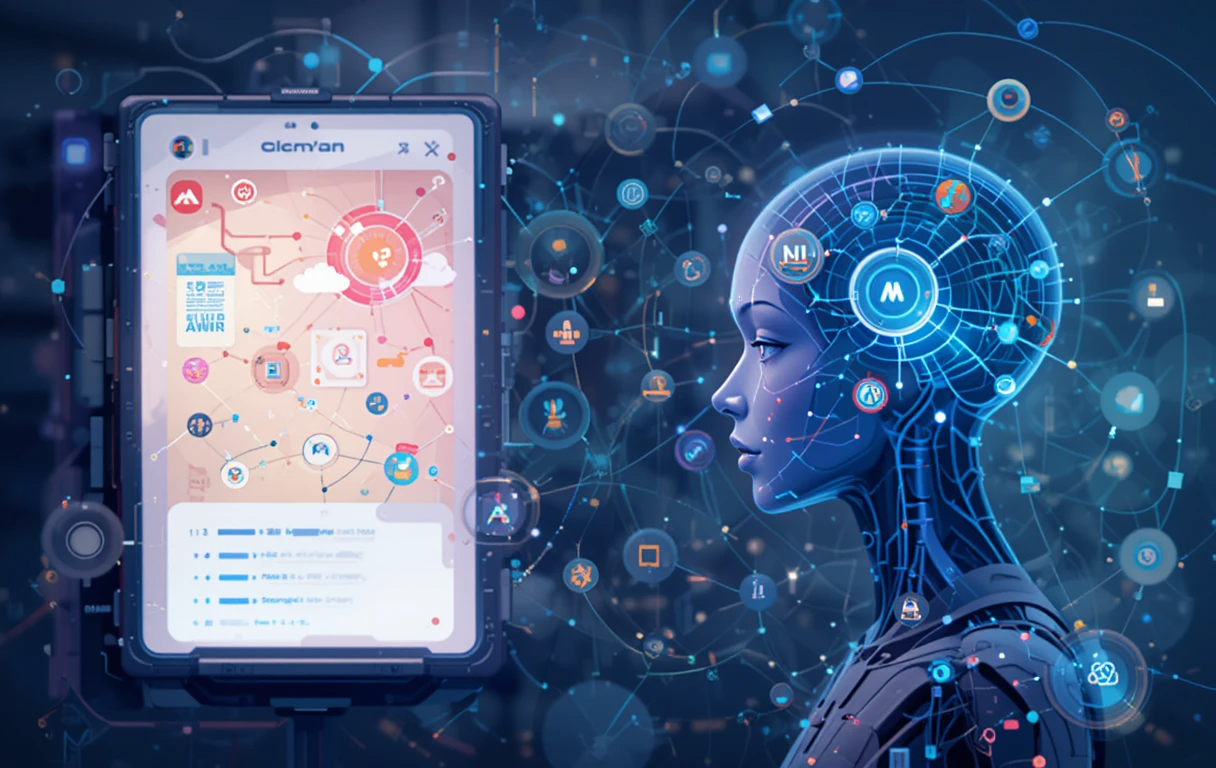In the fast-evolving world of education technology, a new form of support is taking center stage: Artificial Intelligence-powered personal tutors. Once considered futuristic, intelligent learning companions are now a real and growing part of the modern learning landscape.
With platforms like ChatGPT, Khanmigo, ScribeSense, and Google’s AI Tutor pilot programs, the question is no longer if AI can tutor students—but how well it can do so. Can AI truly provide personalized, effective learning experiences similar to—or even better than—human tutors?
In this article, we’ll dive deep into how AI is revolutionizing tutoring, its benefits, limitations, real-life examples, and how it could shape the future of one-on-one learning.
🧠 What Is an AI Tutor?
An AI tutor is an artificial intelligence system designed to support students by simulating a human tutor’s role. It can help learners by:
- Explaining difficult concepts
- Asking and answering questions
- Providing feedback and suggestions
- Adapting to a student’s pace and level
- Tracking progress over time
Unlike static educational content, AI tutors interact dynamically, offering tailored explanations based on how a student learns best.
📚 Why Traditional Tutoring Falls Short for Many
One-on-one tutoring is proven to boost academic performance, confidence, and motivation. But traditional tutoring has limitations:

- Cost: Many families can’t afford regular private sessions.
- Availability: Good tutors may not be accessible in all areas.
- Consistency: Scheduling and follow-ups can be irregular.
- Scalability: Schools can’t assign a personal tutor to every student.
This is where AI steps in—with the promise of affordable, always-on, and personalized learning support for all.
✅ Advantages of AI as a Personalized Tutor
Let’s explore the major benefits AI tutors offer to students, teachers, and parents.
1. Round-the-Clock Availability
AI tutors are never sick, busy, or on vacation. They’re available 24/7, supporting students anytime they need help—whether that’s during homework at 11 PM or studying for a test on a Sunday.
Example:
A student revising fractions at midnight can ask, “What’s the difference between ⅓ and ¼?” and get an instant, clear explanation.
2. Adaptive Learning Paths
AI can assess a learner’s knowledge level and adjust instruction accordingly. If a student struggles with algebra, the AI won’t push forward—it’ll review fundamentals.
Example:
Instead of teaching “quadratic equations” right away, it might review “solving linear equations” first if needed.
Benefit: No student is left behind or rushed forward too quickly.
3. Engaging Interactive Learning
Many AI tools use gamified techniques, quizzes, voice interaction, and dynamic visual aids to make learning more interactive and fun.
Example:
Duolingo’s AI assistant adapts vocabulary lessons with stories, jokes, and visuals to keep learners engaged.
4. Instant Feedback and Correction
AI tutors provide real-time feedback, correcting mistakes and explaining why something is wrong.
Example:
A student writes: “The sun rotate around the earth.”
The AI corrects: “It should be ‘The sun rotates around the Earth,’ but actually, the Earth rotates around the Sun.”
5. Data-Driven Insights
AI can track performance over time and generate detailed analytics.
For teachers: It highlights areas where the whole class struggles.
For students: It shows improvement trends and knowledge gaps.
Benefit: Data can inform smarter study habits and teaching strategies.
6. Affordable and Scalable
AI tutoring systems cost far less than human tutors and can be scaled across classrooms, districts, or even countries.
Benefit: Equal access to high-quality tutoring, regardless of location or income.
🔍 Real-World AI Tutor Examples
Here are some current platforms offering intelligent learning companions:
1. Khanmigo (by Khan Academy)
- A ChatGPT-powered tutor that guides students through math, science, and writing tasks.
- Encourages Socratic questioning instead of just giving answers.
2. Socratic by Google
- A free mobile app that uses AI to answer homework questions using explanations and visual content.
- Ideal for quick help with science and math.
3. Duolingo Max
- Uses OpenAI’s GPT to simulate a language tutor that provides corrections and real-time conversational practice.
4. ScribeSense
- Offers AI-driven feedback on student writing, spelling, and grammar with personalized improvement tips.
5. TutorAI
- A GPT-powered tutor that builds structured learning sessions based on a topic like “Photosynthesis” or “World War II.”
⚠️ Challenges and Limitations
Despite the progress, AI tutors are not perfect—and can never fully replace human interaction. Here’s why:
1. Lack of Emotional Intelligence
AI can’t detect a student’s mood, motivation, or emotional state. If a learner is frustrated or anxious, AI won’t provide empathy or encouragement like a human can.
Result: Emotional support—a critical element in learning—is missing.
2. Inaccuracy and “Hallucinations”
AI sometimes generates incorrect or misleading information, especially in complex or subjective topics.
Example: ChatGPT might misstate historical facts or solve a math problem with flawed logic.
Solution: Students should verify AI answers with reliable sources or teachers.
3. Risk of Overdependence
If students rely too heavily on AI to solve problems or write essays, they may skip critical thinking, creativity, and effort.
Result: Shallow understanding and reduced academic growth.
4. Limited Context Understanding
AI doesn’t understand personal context. If a student says, “I don’t get it like the way Mr. Lee explained it,” the AI can’t connect that to a specific classroom explanation.
5. Digital Divide
Not all students have access to the internet, smartphones, or laptops.
Result: AI tutoring may benefit the privileged more, increasing education inequality unless access issues are addressed.
🧭 Human + AI = The Best Tutoring Model
Instead of asking, “Can AI replace tutors?”, a better question is, “How can AI complement human tutors and teachers?”
Here’s how that combination works best:
- AI handles: Repetitive explanations, concept reviews, quizzes, instant corrections
- Humans handle: Motivation, emotional support, personalized feedback, real-world application
Together, they create a hybrid tutoring model that leverages AI’s strengths and human intuition.
🏫 Classroom Applications of AI Tutors
Teachers are starting to integrate AI tutors in innovative ways:
- Flipped Classrooms: Students learn basic content with AI at home, then discuss in class.
- Differentiated Learning: AI customizes difficulty levels for different students.
- Homework Helper Bots: Chatbots embedded in school portals to support assignments.
- Test Preparation: AI generates practice questions and feedback tailored to each student’s progress.
👨👩👧 Tips for Using AI Tutors Wisely
For Students
- Use AI to learn, not just to finish assignments.
- Ask “why” and “how” questions to deepen understanding.
- Cross-check AI responses with class notes or trusted sources.
For Teachers
- Introduce AI tools early and teach digital literacy.
- Design assignments that require original thinking.
- Monitor AI use and encourage transparency from students.
For Parents
- Explore AI tools with your child.
- Discuss ethics and honesty in using AI.
- Encourage balance: AI as a helper, not a crutch.
🔮 The Future of AI Tutoring
What does the future hold for AI-powered tutors?
- Voice-Based AI Tutors: Alexa-like tutors that speak and listen.
- Emotionally Aware AI: Systems that can detect tone or facial expressions and adapt responses.
- Multimodal Learning: Combining text, audio, video, and interactive visuals.
- Integration with AR/VR: Immersive virtual tutors guiding students in simulated environments.
The vision is clear: AI tutors won’t just be tools—they’ll become intelligent learning companions that walk with students through every stage of their education journey.
✍️ Final Thoughts
AI tutoring is no longer science fiction—it’s here, and it’s reshaping education. Whether through ChatGPT, Khanmigo, or other platforms, students today have access to personalized, responsive, and powerful learning support unlike any generation before.
But AI is a tool—not a teacher. Its power lies in how we choose to use it.
With thoughtful integration, ethical use, and human guidance, AI tutors can level the playing field, ignite curiosity, and support lifelong learning for everyone.
Coming up next:
Stay tuned for our next article in the AI education series:
“AI in the Classroom: Enhancing Teacher Productivity and Student Engagement”


